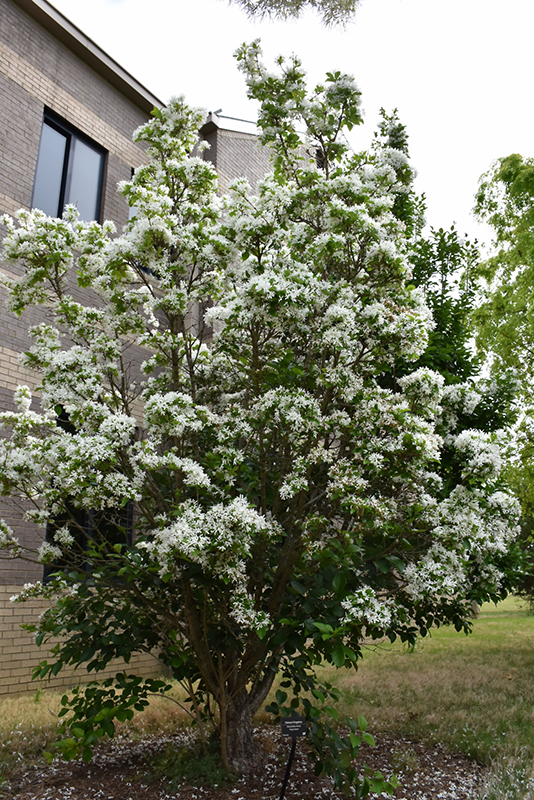Tokyo Tower Chinese Fringetree
Chionanthus retusus 'Tokyo Tower'
Height: 15 feet
Spread: 6 feet
Sunlight:
![]()
![]()
Hardiness Zone: 5b
Other Names: Fringe Tree
Description:
A beautiful, narrow, strongly upright branching tree, presenting frothy panicles of fine white, strap-like flowers above the foliage in spring; attractive berries in fall, and interesting bark for winter value; a wonderful landscape accent
Ornamental Features
Tokyo Tower Chinese Fringetree is clothed in stunning panicles of fragrant white flowers held atop the branches in late spring. It features an abundance of magnificent navy blue berries from late summer to late fall. It has forest green deciduous foliage. The glossy oval leaves turn an outstanding yellow in the fall. The peeling gray bark adds an interesting dimension to the landscape.
Landscape Attributes
Tokyo Tower Chinese Fringetree is a multi-stemmed deciduous tree with a narrowly upright and columnar growth habit. Its relatively coarse texture can be used to stand it apart from other landscape plants with finer foliage.
This is a relatively low maintenance tree, and should only be pruned after flowering to avoid removing any of the current season's flowers. It is a good choice for attracting birds to your yard. It has no significant negative characteristics.
Tokyo Tower Chinese Fringetree is recommended for the following landscape applications;
- Accent
- Mass Planting
- Hedges/Screening
- General Garden Use
Planting & Growing
Tokyo Tower Chinese Fringetree will grow to be about 15 feet tall at maturity, with a spread of 6 feet. It has a low canopy with a typical clearance of 2 feet from the ground, and is suitable for planting under power lines. It grows at a slow rate, and under ideal conditions can be expected to live for 70 years or more.
This tree does best in full sun to partial shade. It is quite adaptable, prefering to grow in average to wet conditions, and will even tolerate some standing water. It is not particular as to soil pH, but grows best in rich soils. It is highly tolerant of urban pollution and will even thrive in inner city environments. This is a selected variety of a species not originally from North America.



